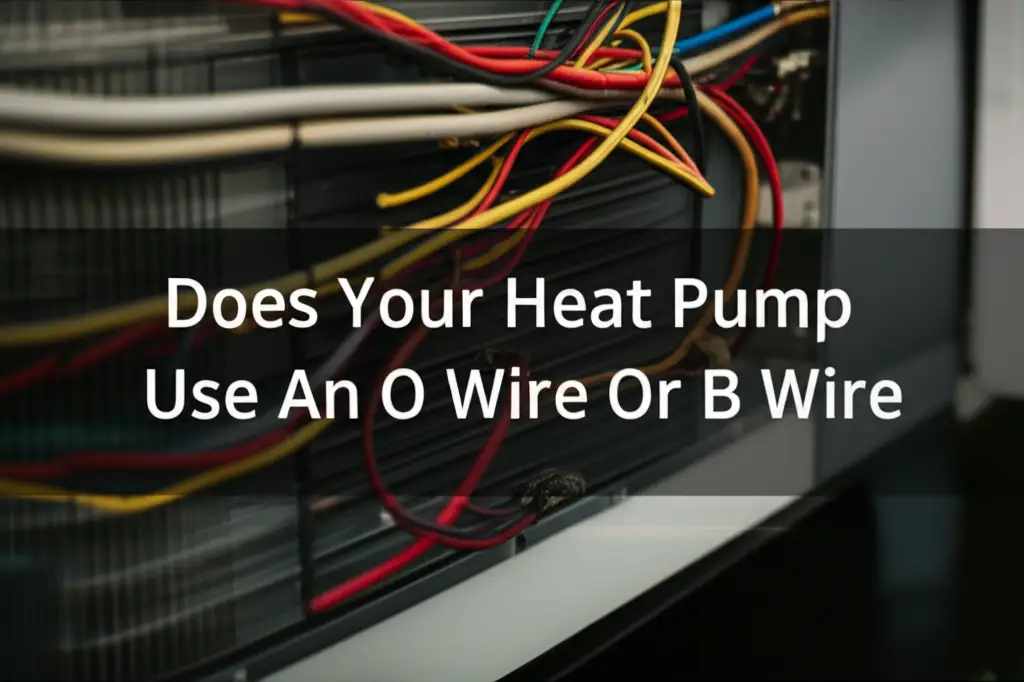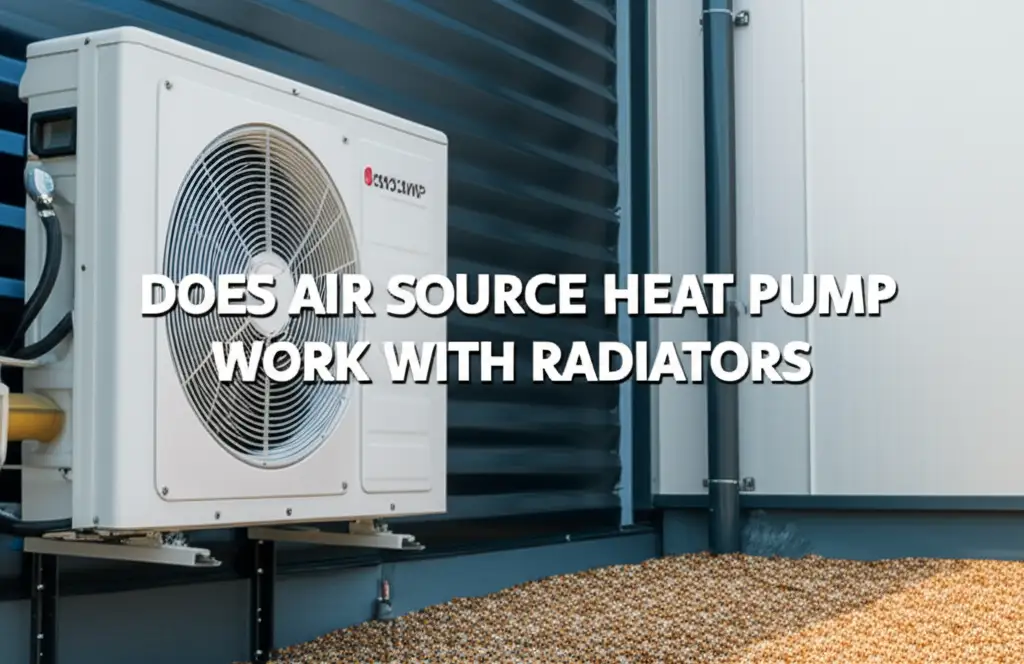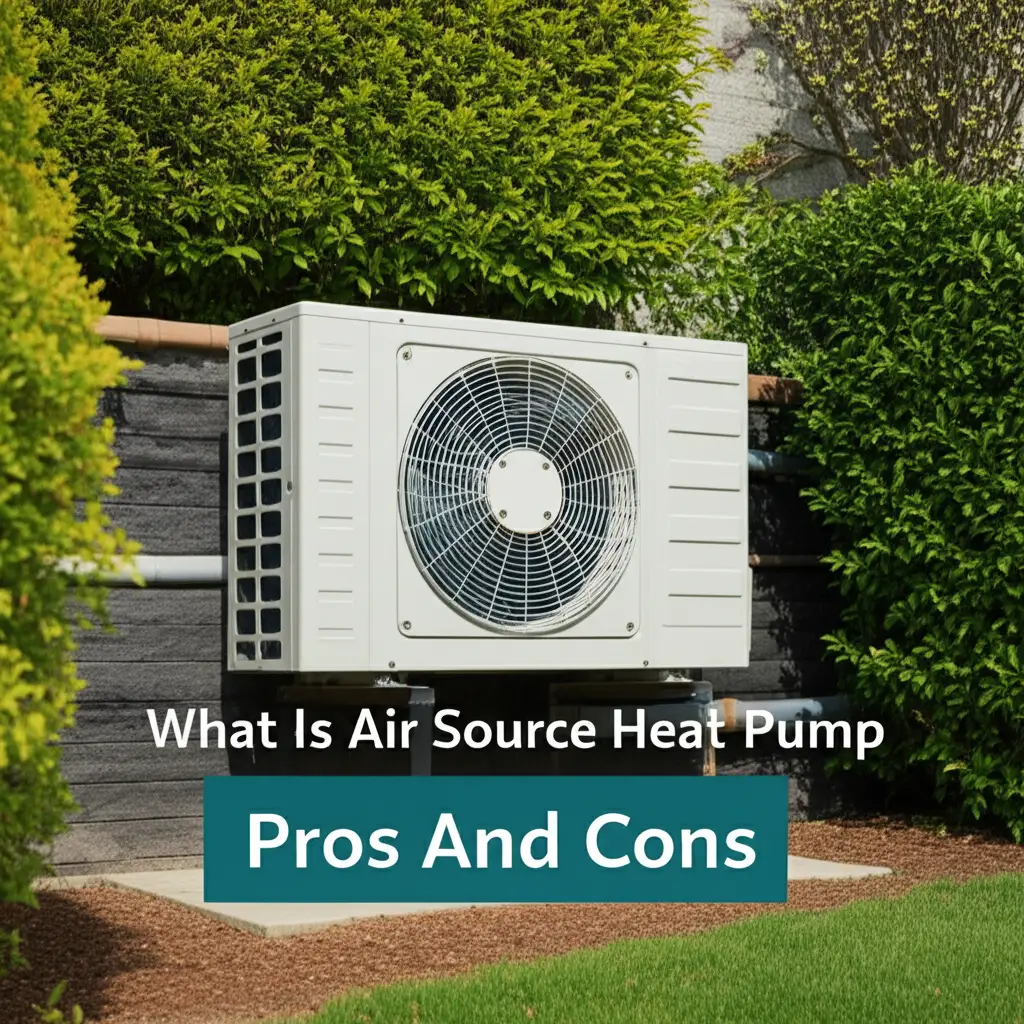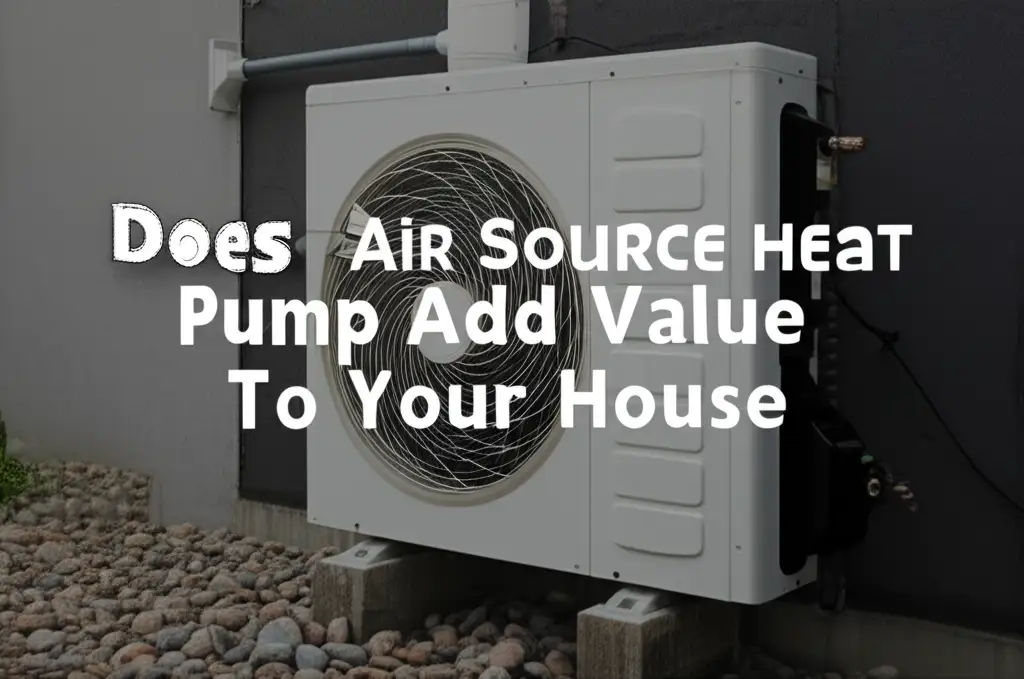· Katria Melrose · Home HVAC Systems · 24 min read
Can Air Source Heat Pump Be Used For Cooling
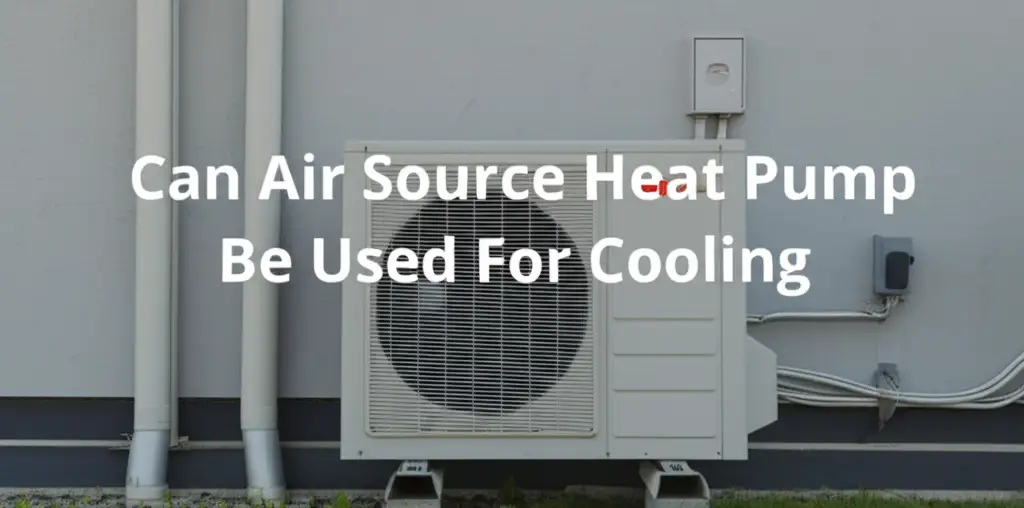
Cooling with an Air Source Heat Pump: A Smart Choice
The idea of heating your home with an air source heat pump is common. Many people understand these systems deliver warmth in colder months. But what about when the weather turns warm? Can an air source heat pump be used for cooling? This is a question many homeowners ask when considering a heat pump system. My goal is to explain how these versatile units provide cooling, making them a dual-purpose solution for year-round comfort. We will look at how the cooling process works, its benefits, and what you need to know about setting up such a system.
Takeaway
- Air source heat pumps offer efficient cooling through a reverse cycle.
- They move heat out of your home, similar to a refrigerator.
- These systems provide an energy-efficient alternative to traditional air conditioners.
- You can enjoy both heating and cooling from a single unit.
- Proper installation and maintenance ensure optimal performance.
Yes, an air source heat pump can definitely be used for cooling your home. These systems work by reversing their operation to extract heat from inside your house and release it outdoors. This provides efficient and effective air conditioning during warm periods.
How an Air Source Heat Pump Provides Cooling
An air source heat pump is a truly clever device. It does not generate heat; it moves heat. This is true for both heating and cooling functions. For cooling, the process simply reverses.
Think of it like your refrigerator. A refrigerator takes heat from inside its compartment and releases it into your kitchen. An air source heat pump works on the same principle for your entire home. It extracts heat from your indoor air and transfers it outside. This makes your indoor space cooler and more comfortable.
The system uses a refrigerant fluid that circulates through a coil. When the refrigerant is cold, it absorbs heat from your home’s air. This warm refrigerant then moves to the outdoor unit. Here, it releases the heat to the outside environment. The refrigerant then cools down and returns inside to repeat the process. This continuous cycle keeps your home cool.
This reverse cycle operation is what makes a heat pump so versatile. It means one system handles both your heating and cooling needs. This can simplify your home comfort setup significantly. Understanding this fundamental process helps explain why air source heat pumps are more than just heating devices.
The Reverse Cycle Explained
The reverse cycle is the core of an air source heat pump’s cooling ability. In heating mode, the outdoor unit absorbs heat, and the indoor unit releases it. For cooling, this process flips. The indoor unit becomes the evaporator. It absorbs heat from the indoor air.
The outdoor unit becomes the condenser. It releases that absorbed heat to the outside air. A special component called a “reversing valve” manages this change in direction. This valve switches the flow of refrigerant. This allows the heat pump to either pull heat in or push heat out.
This mechanical reversal allows the heat pump to adapt to different seasons. It means you have one system providing comfort all year. This design is very efficient. It uses less energy than separate heating and cooling systems.
Benefits of Using an Air Source Heat Pump for Cooling
Using an air source heat pump for cooling brings many advantages. These benefits make them a popular choice for modern homes. One major advantage is energy efficiency. Heat pumps are incredibly efficient at moving heat. They do not burn fuel to create cold air. They simply transfer heat from one place to another.
This means they use less electricity compared to traditional air conditioners. This can lead to lower energy bills during cooling seasons. I find this aspect particularly appealing, as it helps reduce running costs. Their dual functionality also offers convenience. You get both heating and cooling from a single unit. This avoids the need for separate systems, simplifying installation and maintenance.
Another benefit is environmental impact. Because they are so efficient, heat pumps reduce your carbon footprint. They use less energy, which means fewer greenhouse gas emissions. This aligns with many people’s desire for more sustainable living. The comfort level is also high. Heat pumps provide consistent cooling. They maintain a steady indoor temperature without large fluctuations.
Some models also help dehumidify the air. This adds to overall comfort, especially in humid climates. The ability to handle both heating and cooling makes an air source heat pump a smart long-term investment for home comfort. It offers a comprehensive climate control solution for any season.
Energy Efficiency and Cost Savings
The energy efficiency of an air source heat pump is a significant benefit. Traditional air conditioners cool by removing heat. Heat pumps do the same, but with greater efficiency. They typically operate with a high Coefficient of Performance (COP) in heating mode and Energy Efficiency Ratio (EER) or Seasonal Energy Efficiency Ratio (SEER) in cooling mode. A higher SEER rating means more efficient cooling. This efficiency comes from moving heat instead of generating it.
For every unit of electricity used, a heat pump can move several units of heat. This translates directly into lower operating costs. My own experience suggests these savings can be substantial over time. You use less electricity to achieve the same cooling effect. This helps offset the initial installation cost.
Many governments and utilities offer incentives for installing energy-efficient systems like heat pumps. These incentives can further reduce the overall expense. Over its lifespan, a heat pump often pays for itself through energy savings. This makes it an economically sound choice for cooling.
Air Source Heat Pumps vs. Traditional Air Conditioners
When considering cooling, you might compare air source heat pumps with traditional air conditioners. Both systems cool your home. However, their operation and overall utility differ. A traditional air conditioner focuses solely on cooling. It has an outdoor compressor unit and an indoor evaporator coil. It uses refrigerant to absorb indoor heat and release it outside. This is its only function.
An air source heat pump does everything a traditional air conditioner does for cooling. But it also provides heating. It does this by reversing the flow of refrigerant. This dual capability is a major differentiator. You get two essential functions in one unit. This can simplify your HVAC setup.
In terms of efficiency, modern heat pumps often surpass traditional AC units. They are designed for year-round operation. This means their components are built to handle varied conditions. Many heat pump models achieve higher SEER ratings than standard air conditioners. This translates to lower running costs for cooling. The upfront cost for a heat pump might be higher than a basic AC unit. However, the long-term energy savings and the elimination of a separate heating system can make the heat pump more economical.
Maintenance is similar for both. Both need regular checks of coils, refrigerant levels, and filters. You should check how often an air source heat pump should be serviced to keep it running well. For installation, both need outdoor and indoor units, and ductwork if it’s a ducted system. The key difference lies in the heat pump’s ability to switch functions. This gives it a significant edge for comprehensive home climate control.
Performance in Different Climates
The cooling performance of an air source heat pump varies by climate. In moderate climates, heat pumps perform excellently. They provide efficient cooling without issue. They easily handle typical summer temperatures. Their efficiency ratings remain high.
In extremely hot and humid climates, performance can be different. While heat pumps still cool effectively, their efficiency might decrease slightly at peak temperatures. The outdoor unit works harder to dissipate heat into very hot air. This is similar to how an air conditioner would perform in extreme heat. Some advanced heat pump models have variable speed compressors. These adapt to the conditions. This helps maintain efficiency even in hotter weather.
Dehumidification is also a factor. Heat pumps remove moisture from the air as they cool. This is important for comfort in humid regions. Some heat pumps have dedicated dehumidification modes. This improves indoor air quality.
Overall, modern air source heat pumps are designed to perform well in a wide range of climates. They provide reliable cooling even in challenging conditions. Proper sizing and installation are key for optimal performance, no matter the climate.
Installation Considerations for ASHP Cooling
Installing an air source heat pump for cooling requires careful planning. It involves more than just placing a unit outside. Proper installation ensures optimal performance and efficiency. One key consideration is sizing the unit correctly for your home. An undersized unit will struggle to cool your space. It will run constantly, wasting energy. An oversized unit will cycle on and off too frequently. This causes uneven cooling and reduces efficiency. A professional installer calculates the right size based on your home’s square footage, insulation, and window types.
Ductwork is another important aspect. If you have existing ducts for a furnace, they might work with the heat pump. However, the ductwork needs inspection. It must be sealed properly and sized correctly for airflow. Leaky or improperly sized ducts can lead to significant energy loss. If your home lacks ductwork, a ductless mini-split heat pump system is an option. These systems use individual indoor units in different rooms. They connect to one outdoor unit.
The location of the outdoor unit also matters. It needs good airflow and space for maintenance. It should be away from bedrooms or quiet areas due to operational noise. Consider how far can an air source heat pump be from your house and if you can you put an air source heat pump on the front of your house. These questions impact noise levels and aesthetics. Proper electrical service is crucial. Heat pumps require a dedicated electrical circuit. Your home’s electrical panel must handle the additional load. An experienced installer will ensure all these factors are addressed. This guarantees a smooth installation and efficient cooling for years to come.
Sizing and System Design
Sizing a heat pump correctly is vital for its cooling function. It is not just about the BTU rating. Many factors impact the required cooling capacity. These include your home’s insulation levels. Well-insulated homes need less cooling capacity. Window types and their sun exposure also play a role. South-facing windows, for example, gain more heat. The climate zone you live in dictates average temperatures.
A professional uses a “load calculation” to determine the precise size. This involves complex formulas. It considers heat gains from people, appliances, and lighting. Incorrect sizing leads to comfort problems and higher bills. An oversized unit cycles too often. This means it reaches the set temperature quickly then shuts off. This creates humidity issues because it does not run long enough to properly dehumidify the air. An undersized unit runs constantly. It struggles to cool the space on hot days. It also wears out faster.
System design also includes the indoor components. This covers the type of indoor coils and fan. It also includes the ductwork layout if it’s a central system. Proper duct design ensures even airflow and cooling throughout your home. For homes without ducts, a multi-zone mini-split system design is common. Each indoor unit is sized for the room it serves. This allows for customized temperature control in different areas. Good design helps the heat pump perform efficiently in both heating and cooling modes. You might want to consider how to design an air source heat pump system if you are looking for specific information.
Optimizing ASHP for Cooling Performance
Once your air source heat pump is installed, optimizing its performance for cooling is next. This helps ensure comfort and efficiency. Regular maintenance is perhaps the most important step. Just like any HVAC system, heat pumps benefit from routine care. This includes cleaning or replacing air filters monthly. Dirty filters restrict airflow. This makes the system work harder. It reduces efficiency and cooling capacity.
The outdoor coil also needs to stay clean. Debris like leaves, dirt, or grass clippings can build up on it. This blocks airflow and reduces heat transfer. You can gently spray the coil with a garden hose to clean it. Make sure the power to the unit is off first. I always make sure to keep the area around the outdoor unit clear. This allows for proper airflow.
Setting your thermostat correctly also plays a big role. Avoid setting it too low. Every degree lower significantly increases energy use. A setting of 75-78°F (24-26°C) is often comfortable and efficient. Using a programmable or smart thermostat helps manage temperatures. You can set it to higher temperatures when you are away. Then it can cool down before you return home. Smart thermostats can even learn your habits. This further optimizes energy use.
Addressing air leaks in your home also helps the heat pump cool efficiently. Seal cracks around windows and doors. Add insulation to attics and walls if needed. A well-sealed home prevents cooled air from escaping. This reduces the workload on your heat pump. Following these steps helps your air source heat pump provide excellent cooling performance throughout the summer.
Smart Thermostat Integration
Integrating a smart thermostat with your air source heat pump greatly enhances cooling performance. Smart thermostats offer precise control over your home’s temperature. They often have features that basic programmable thermostats lack. For example, many smart thermostats can learn your daily schedule. They adjust the temperature automatically based on your presence. This means the system cools your home only when needed. This avoids wasting energy when you are out.
Remote control is another huge benefit. You can adjust your cooling settings from anywhere using a smartphone app. This is great for coming home to a perfectly cooled house. Some models also provide energy usage reports. This helps you understand how much power your heat pump uses for cooling. This information allows you to make informed decisions about your energy consumption.
Many smart thermostats also integrate with other smart home devices. This includes voice assistants or other smart sensors. This creates a unified home automation system. This connectivity can optimize your heat pump’s operation even further. Before you integrate, it’s a good idea to check if you can use Hive with an air source heat pump or other smart thermostat brands. This ensures compatibility and maximizes efficiency. A smart thermostat helps your heat pump work smarter, not just harder, for cooling.
Potential Drawbacks and Limitations of ASHP Cooling
While air source heat pumps offer excellent cooling, they do have some potential drawbacks and limitations. Understanding these helps you make an informed decision. One common concern is noise. The outdoor unit contains a fan and compressor. These components produce some noise during operation. While modern units are much quieter than older models, they are not silent. The noise level might be a consideration if the unit is near a bedroom window or a neighbor’s property. Always check decibel ratings before purchasing.
Performance in extreme heat is another point. In very hot climates, when outdoor temperatures soar above 100°F (38°C), a heat pump might not cool as efficiently. It still provides cooling, but its capacity might reduce slightly. This is similar to how a traditional air conditioner performs under extreme conditions. The system works harder to move heat against a larger temperature difference. However, most modern heat pumps are designed to handle high temperatures well within typical summer ranges.
Installation complexity can also be a factor. While simpler than separate heating and cooling systems, installing a heat pump still requires professional expertise. Proper sizing, ductwork (if applicable), and electrical connections are critical. An improper installation can lead to reduced efficiency and performance issues. This means higher operating costs or discomfort. For instance, sometimes an air source heat pump keeps running for reasons tied to installation or sizing.
Finally, the upfront cost can be higher than a conventional air conditioner. While heat pumps offer long-term energy savings, the initial investment is often more substantial. However, government incentives and rebates can often help offset this cost. Weighing these factors helps determine if an air source heat pump is the right cooling solution for your home.
Defrost Cycle in Cooling Mode (Rare but Possible)
You might typically associate a defrost cycle with heating mode, especially when discussing why an air source heat pump freezes up. However, it is important to know that a defrost cycle can, rarely, occur even when the unit is in cooling mode. This happens in very specific, unusual conditions. Imagine a scenario where the outdoor temperature is low, but the indoor temperature is set to cool.
If the outdoor coils become too cold due to unusual circumstances, like very specific humidity and temperature combinations, ice could form. For example, this might happen during cool, damp shoulder seasons when cooling is still desired indoors. When this occurs, the heat pump may temporarily switch to a heating cycle to warm the outdoor coil. This melts any ice buildup.
Once the ice is gone, the system reverts to normal cooling operation. This is a protective measure to ensure the unit functions correctly. It prevents damage to the outdoor coil and maintains efficiency. While this situation is uncommon during peak cooling seasons, it is a function the heat pump has. It shows the system’s ability to adapt to varying conditions.
Cost Implications of ASHP Cooling
Understanding the cost implications of using an air source heat pump for cooling involves looking at both upfront and running costs. The initial installation cost for an air source heat pump is generally higher than for a standard central air conditioner. This is because heat pumps are more complex machines, designed for year-round operation. They include components like the reversing valve that standard ACs do not have. The price can also vary based on the unit’s size, efficiency rating, and the complexity of the installation. For example, if new ductwork is needed, the cost goes up. You might want to explore how much an air source heat pump costs to install.
However, the running costs for cooling with an air source heat pump are often lower. As discussed, heat pumps are very energy-efficient. They move heat rather than generating coolness. This uses less electricity. Over the lifespan of the unit, these energy savings can offset the higher initial investment. This makes them a more economical choice in the long run.
Geographic location and local electricity rates play a big role in running costs. In areas with high electricity prices, the savings from a heat pump’s efficiency are even more pronounced. Maintenance costs are similar to those for a traditional AC unit. Regular servicing ensures optimal performance and longevity. Skipping maintenance can lead to breakdowns and higher repair bills. Always remember to check how often an air source heat pump should be serviced to maintain its efficiency.
Considering the total cost of ownership, including purchase price, installation, energy consumption, and maintenance, an air source heat pump can be a very cost-effective cooling solution. Especially when you factor in its heating capabilities, it provides excellent value as a complete climate control system.
Long-Term Value and ROI
The long-term value of an air source heat pump for cooling extends beyond annual energy savings. It represents a significant return on investment (ROI). While the initial price might be higher, the dual heating and cooling functions provide year-round comfort from a single, efficient system. This eliminates the need for separate heating equipment, such as a furnace. This simplifies your home’s mechanical systems and can free up space.
The energy efficiency of heat pumps consistently translates into lower utility bills. These savings accumulate over the unit’s lifespan, which can be 15-20 years or more with proper maintenance. Over time, the accumulated savings often exceed the initial cost difference. This makes the heat pump a financially sound investment.
Furthermore, a heat pump adds value to your home. As energy efficiency becomes more important to homebuyers, a modern, efficient heat pump system is an attractive feature. It signals a lower cost of living and a commitment to sustainability. This can be a selling point if you decide to move.
Government rebates and tax credits often reduce the upfront cost. These incentives further improve the ROI. The environmental benefits, such as reduced carbon emissions, also contribute to the long-term value. Investing in an air source heat pump means investing in comfortable, cost-effective, and sustainable living for decades.
Is an Air Source Heat Pump Right for My Cooling Needs?
Deciding if an air source heat pump is right for your cooling needs involves evaluating several factors specific to your home and lifestyle. First, consider your current heating and cooling setup. If you are replacing an old, inefficient furnace and a separate air conditioner, a heat pump can be a smart consolidation. It provides a modern, energy-efficient upgrade for both functions.
Think about your climate. While heat pumps work in most climates, their efficiency for cooling is highest in moderate to warm regions. If you live in an area with extremely high summer temperatures, ensure the chosen heat pump model is rated for those conditions. Modern heat pumps are much better at handling extremes than older models.
Your home’s insulation and airtightness are also important. A well-insulated home helps any cooling system work better. It reduces the load on the heat pump. If your home has poor insulation, addressing that first will maximize the heat pump’s cooling efficiency.
Consider your budget. While the upfront cost is higher, the long-term energy savings can be substantial. Evaluate your willingness to invest for future savings. I always recommend getting quotes from qualified installers. They can assess your home’s specific needs. They will provide a detailed proposal. This helps determine if an air source heat pump is the optimal solution for your comfort and energy goals. For more insights on if an air source heat pump is right for me, you can explore further.
Assessing Your Home’s Suitability
Assessing your home’s suitability for an air source heat pump involves a thorough evaluation. Start by looking at your existing HVAC infrastructure. Do you have ductwork? Is it in good condition? If not, a ductless mini-split system might be more suitable. This avoids the cost and disruption of installing new ducts. Consider the available space for both the indoor and outdoor units. The outdoor unit needs clearance for airflow and maintenance. You also need space for the indoor air handler or multiple mini-split heads.
Your home’s electrical capacity is another critical point. Heat pumps require significant power. An electrician can verify your electrical panel can handle the load. They can also upgrade it if necessary. This prevents electrical issues down the line.
Finally, think about your lifestyle and comfort preferences. Do you prefer consistent temperatures? Are you looking for zoned cooling? Heat pumps excel at maintaining steady temperatures. Mini-split versions allow for individual room control. Discuss your specific needs with a qualified HVAC professional. They can perform a comprehensive home assessment. This will help them recommend the best heat pump system for your cooling and heating requirements.
Maintaining Your ASHP for Optimal Cooling
Proper maintenance is key to keeping your air source heat pump performing at its best for cooling. Regular care ensures maximum efficiency, longevity, and reliable comfort. The most frequent task you will do is checking and changing air filters. Dirty filters restrict airflow, making the unit work harder. This reduces cooling efficiency and can even damage the system. Plan to check filters monthly and replace them every 1-3 months, depending on use and household conditions (pets, allergies).
The outdoor unit needs attention too. Keep the area around it clear of debris. Leaves, grass clippings, and dirt can block the coils. This prevents proper heat exchange. Periodically, gently rinse the outdoor coil with a garden hose to remove dirt buildup. Always turn off the power to the unit before cleaning. Ensure bushes and other plants are trimmed back. They should not impede airflow.
Scheduling annual professional maintenance is crucial. A certified technician will inspect the entire system. They check refrigerant levels, electrical connections, and fan motors. They also clean coils thoroughly and ensure proper operation of the reversing valve. This preventive maintenance catches small issues before they become expensive problems. It also ensures the system is ready for the cooling season.
Regular maintenance helps your heat pump run efficiently. This saves you money on energy bills and extends the life of your unit. It also ensures consistent, comfortable cooling throughout the summer months. To understand more about frequency, you can look into how often an air source heat pump should be serviced.
Troubleshooting Minor Cooling Issues
Even with proper maintenance, minor cooling issues can arise. Knowing how to troubleshoot these can save you a service call. If your heat pump is not cooling effectively, first check the thermostat. Ensure it is set to “cool” mode and the temperature is lower than the room’s current temperature. Also, check the fan setting. It should be on “auto” or “on” as desired.
Next, inspect the air filter. A clogged filter is a common culprit for poor airflow and reduced cooling. Replace it if it is dirty. Then, check the outdoor unit. Make sure nothing is blocking the airflow around it. Look for leaves, debris, or overgrown plants. Ensure the outdoor coil is clean. If it appears dirty, power off the unit and gently rinse it with a hose.
Check your circuit breaker panel. A tripped breaker can cut power to the heat pump. Reset it if needed. Listen for unusual noises from the indoor or outdoor units. Hissing sounds might indicate a refrigerant leak. I always advise calling a professional for refrigerant issues or if the system is still not cooling after these basic checks. Sometimes, a heat pump might run all the time, or experience freezing. These issues often need expert attention. Addressing these minor issues promptly helps maintain optimal cooling performance.
FAQ Section
Can an air source heat pump cool an entire house?
Yes, an air source heat pump can effectively cool an entire house. Proper sizing and installation are key. A central ducted system distributes cooled air through your home’s ventilation system. For homes without ducts, multiple indoor mini-split units can provide zoned cooling for individual rooms or areas.
Is cooling with a heat pump as good as traditional AC?
Cooling with a heat pump is generally comparable to or even better than traditional AC. Heat pumps are designed to be highly energy-efficient for both heating and cooling. Modern heat pump models often achieve high SEER ratings, meaning they can provide excellent cooling performance while consuming less electricity than standard air conditioners.
Do air source heat pumps use a lot of electricity for cooling?
Air source heat pumps are very efficient and generally use less electricity for cooling than traditional air conditioners. They operate by moving heat rather than generating it. This process requires less energy. While electricity is still consumed, the efficiency of heat pumps often leads to lower energy bills during the cooling season compared to older AC units.
How does an air source heat pump switch from heating to cooling?
An air source heat pump switches from heating to cooling using a component called a “reversing valve.” This valve changes the direction of the refrigerant flow. In heating mode, it absorbs heat from outside and releases it inside. In cooling mode, the valve reverses the flow, allowing the unit to absorb heat from inside and release it outdoors.
Can I use my existing ductwork with an air source heat pump for cooling?
In many cases, you can use your existing ductwork with an air source heat pump for cooling. However, a professional installer should assess its condition. They will check if the ducts are properly sealed and sized for efficient airflow. Leaky or undersized ducts can reduce the heat pump’s efficiency and performance.
Is cooling with an air source heat pump noisy?
Modern air source heat pumps are significantly quieter than older models. While the outdoor unit, with its fan and compressor, produces some noise during operation, manufacturers have made great strides in reducing sound levels. Noise ratings (decibels) are usually available, allowing you to choose a model that meets your quietness preferences.
Conclusion
So, can an air source heat pump be used for cooling? The answer is a resounding yes. These versatile systems provide highly efficient cooling by simply reversing their operation, moving heat out of your home. This dual capability makes them an excellent investment for year-round comfort, offering significant energy savings compared to separate heating and cooling systems. I believe understanding their function, benefits, and how to maintain them is key for any homeowner.
Choosing an air source heat pump for cooling means embracing an energy-efficient solution that reduces your carbon footprint and lowers your utility bills. While the initial investment might be higher, the long-term savings and comprehensive climate control make them a smart choice. Regular maintenance and proper use ensure your air source heat pump provides optimal cooling for years to come. Consider talking to a qualified HVAC professional to explore how an air source heat pump can enhance your home’s comfort and energy efficiency today.


